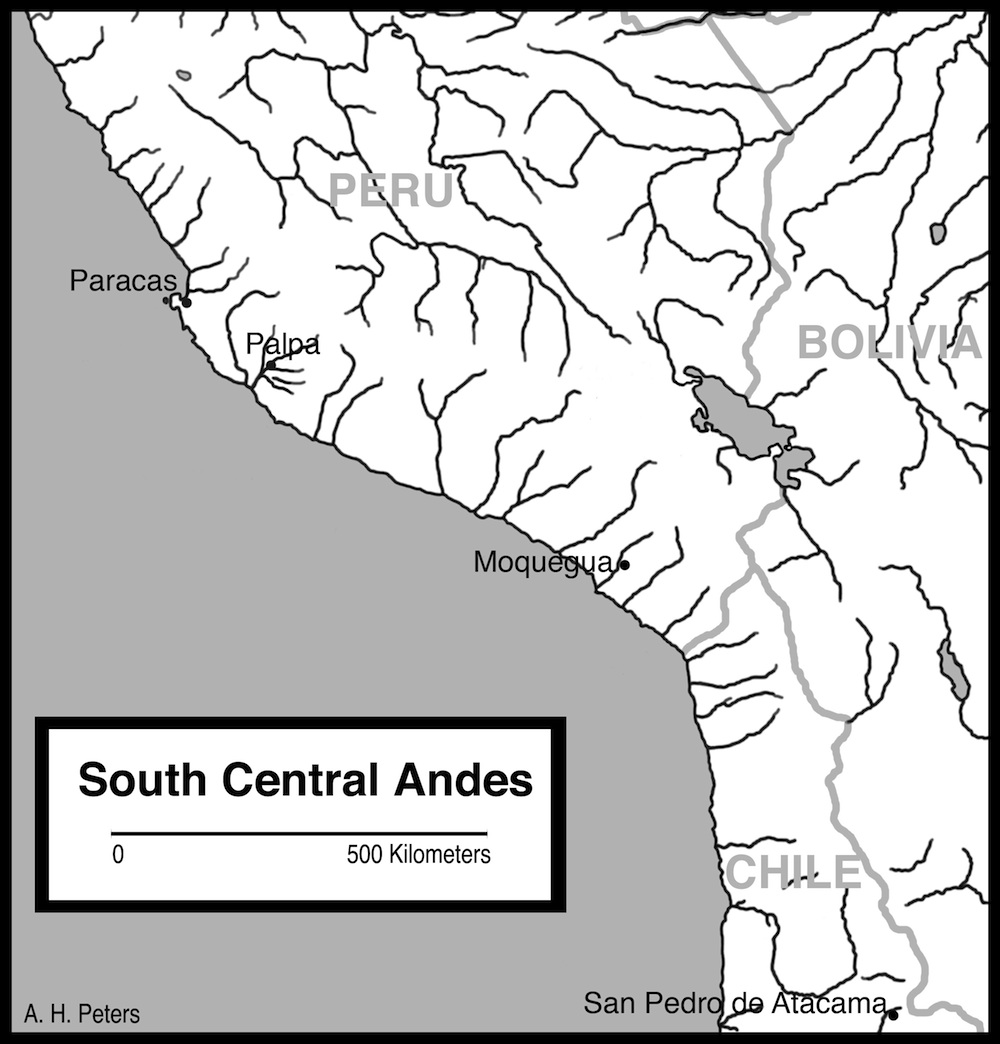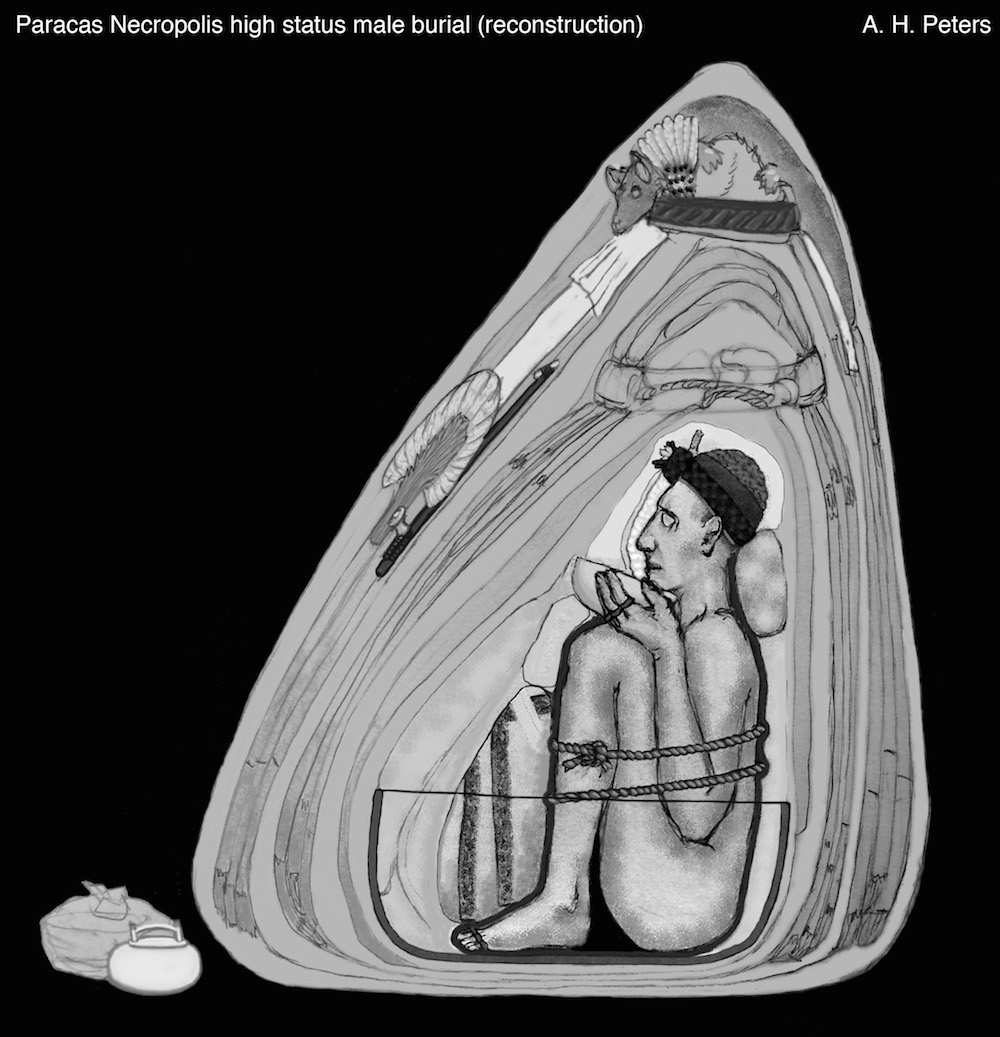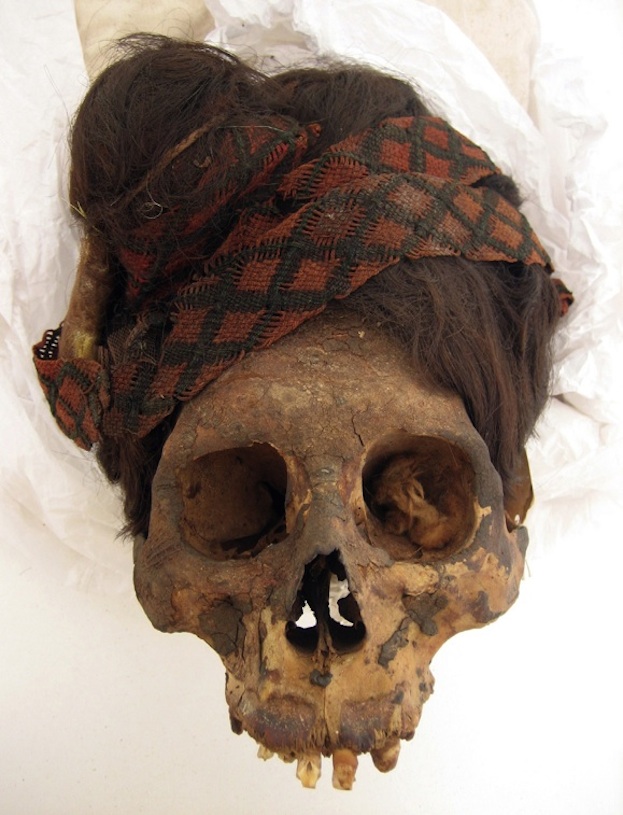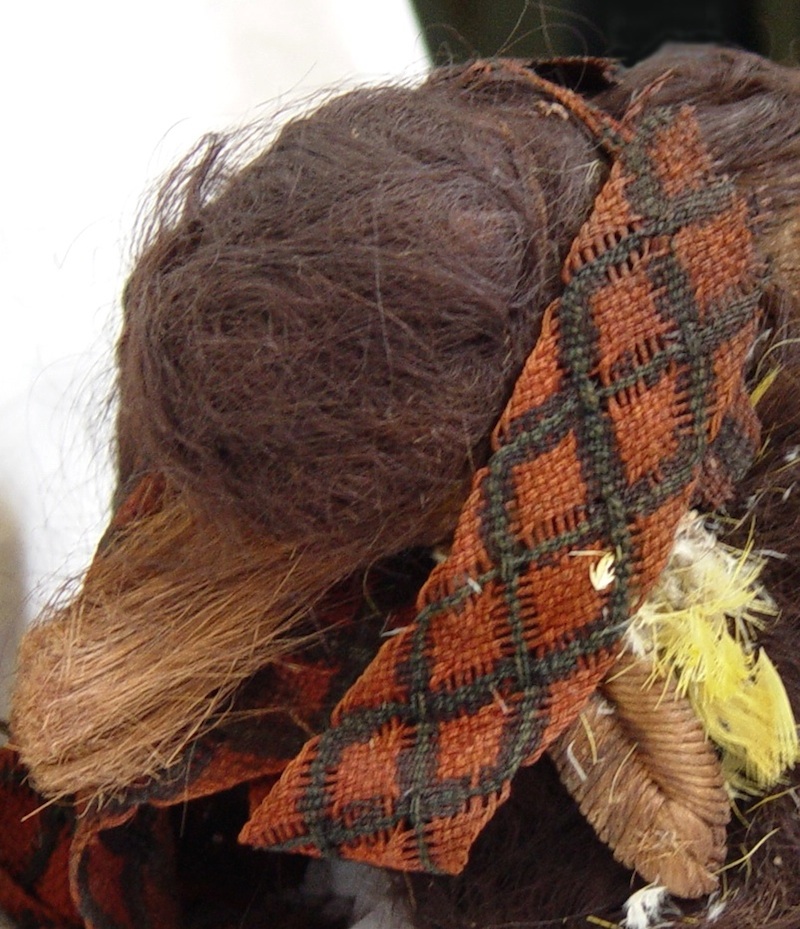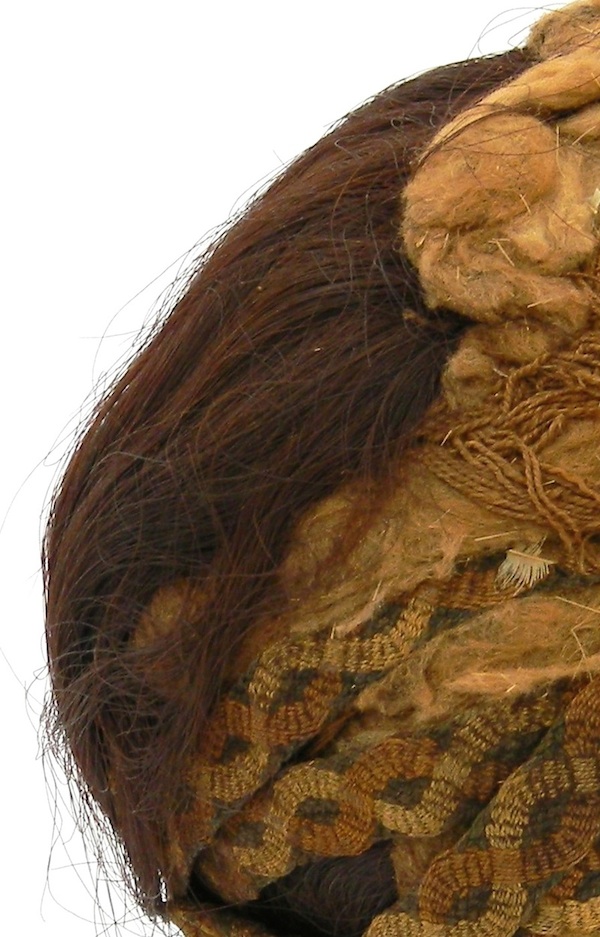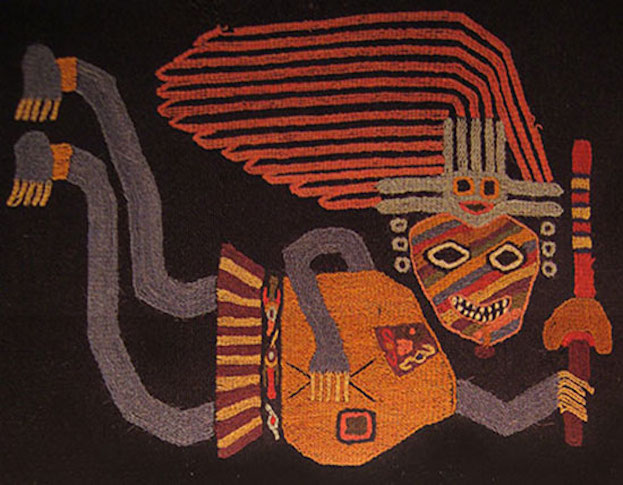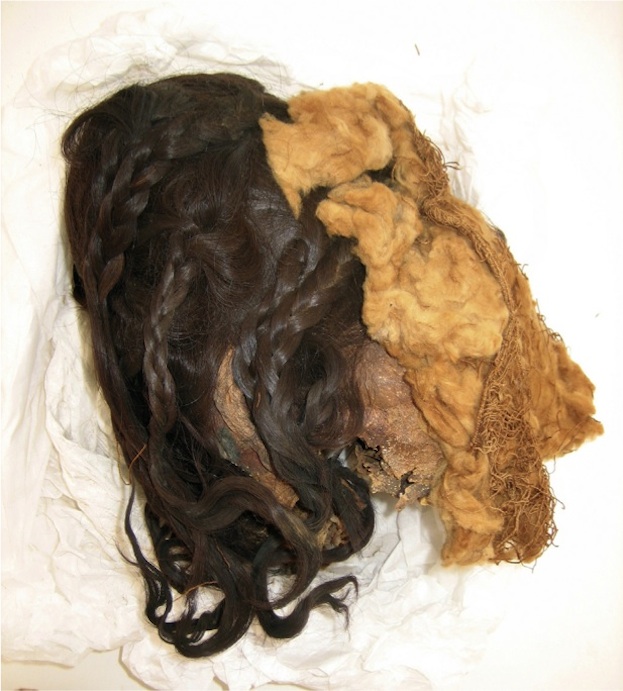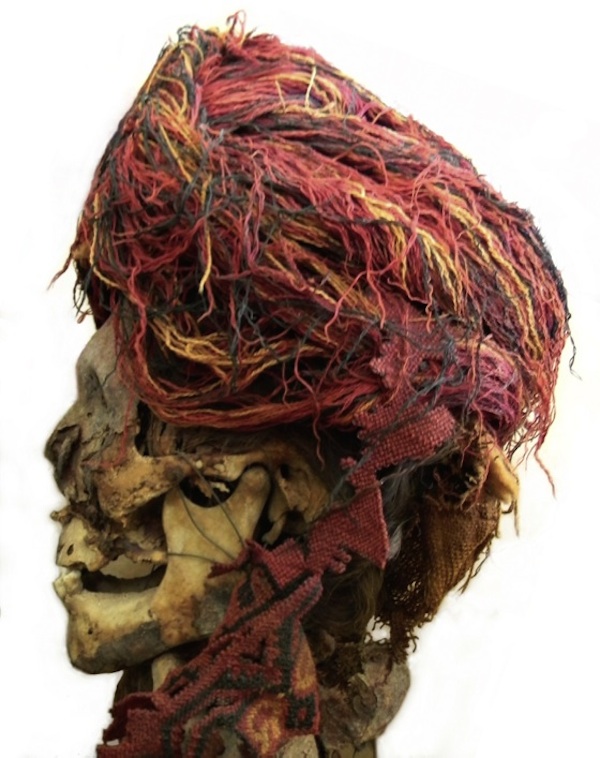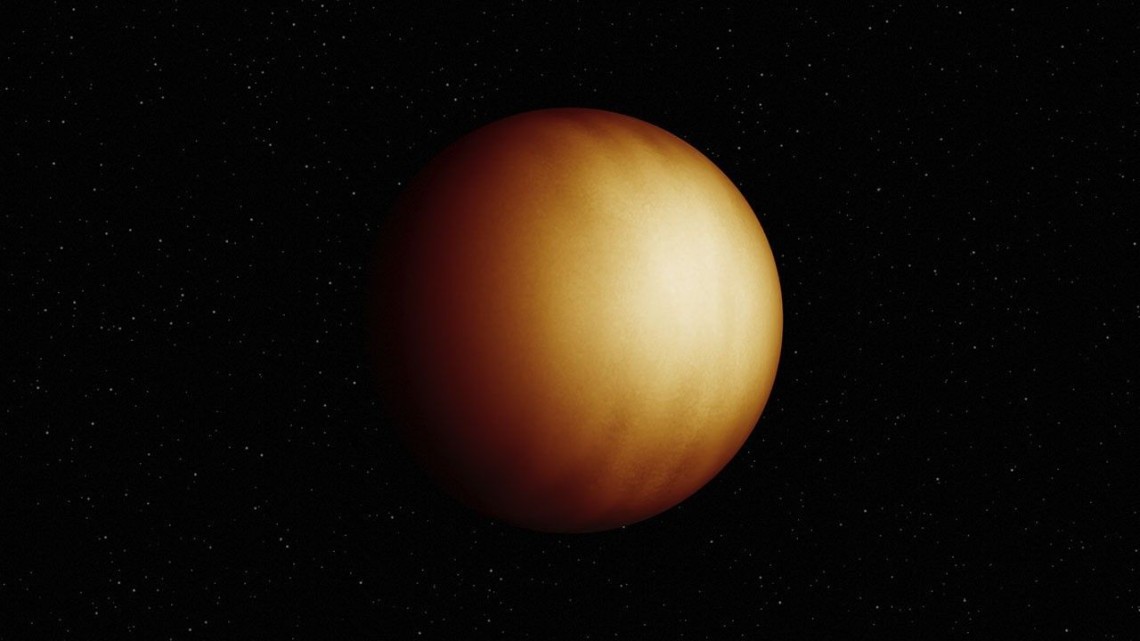Photos: Mummy Hair Reveals Ancient Last Meals
The 2,000-year-old mummies at buried at the Paracas Necropolis in modern-day Peru likely ate corn, beans as well as plants and animals from the sea, a new study finds. Researchers did a chemical analysis of the mummies' hair, and found certain elements that hinted at the mummies' food preferences. Peru's dry climate preserved the mummies, and the researches carefully treated them with respect during the study, they said. [Read the full story on the mummies' food habits]
Coastal culture
Peruvian archaeologist Julio Tello found the Paracas Necropolis along the southern coast of Peru in 1925. There's evidence that the Paracas culture also lived in the Andes Mountains, but it's unclear where they traveled back and forth from the coast to the highlands, the researchers found.
(Image credit: This article was published in the Journal of Archaeological Science, Vol. 55, Knudson KJ, Peters AH, Cagigao ET. "Paleodiet in the Paracas Necropolis of Wari Kayan: carbon and nitrogen isotope analysis of keratin samples from the south coast of Peru," 231-243. Copyright Elsevier 2015. Illustration by Ann Peters.)
Burial site
An illustration of a male burial found at the Paracas Necropolis. Tello and his colleagues found 429 mummy bundles, called fardos, but only 149 of them have ever been opened. The opened fardos contain hundreds of artifacts, including gold ornaments and wool and cotton textiles, the researchers said.
(Image credit: This article was published in the Journal of Archaeological Science, Vol. 55, Knudson KJ, Peters AH, Cagigao ET. "Paleodiet in the Paracas Necropolis of Wari Kayan: carbon and nitrogen isotope analysis of keratin samples from the south coast of Peru," 231-243. Copyright Elsevier 2015. Illustration by Ann Peters.)
Get the world’s most fascinating discoveries delivered straight to your inbox.
Red headdress
To learn more about the mummies' diets, the researchers took hair samples from 14 individuals and two hair artifacts found at the Paracas Necropolis. This individual wears a red and black headdress.
(Image credit: This article was published in the Journal of Archaeological Science, Vol. 55, Knudson KJ, Peters AH, Cagigao ET. "Paleodiet in the Paracas Necropolis of Wari Kayan: carbon and nitrogen isotope analysis of keratin samples from the south coast of Peru," 231-243. Copyright Elsevier 2015. Photo by Elsa Tomasto Cagigao)
Feathery decoration
A male mummy wearing his hair bunched into a topknot. The hair is secured with a braided ornament made of plant fibers and feathers. The researchers were able to learn more about the mummies' eating habits by examining the number and type of carbon and nitrogen isotopes (variations of an element) in the mummies' hair. (Image credit: Ann Peters)
Detailed headbands
The back of a male mummy's head. The man wears a headband resting on top of a light brown cotton fiber and a loosely woven cotton cloth. (Image credit: Ann Peters)
Famous textiles
The people living at Paracas 2,000 years ago created wondrous textiles, which are on display at museums around the world, said the study's lead researcher Kelly Knudson, an associate professor of anthropology at the Center for Bioarchaeological Research at Arizona State University.
"It was so dry on the coast of Peru that these people were naturally mummified with yards and yards of these beautifully embroidered textiles," Knudson said. "Some of which took possibly 50,000 hours to create."
Previous research has referred to the figure in this textile as a dancing or falling figure, a shamanic figure, or a sacrificed person who is making the transition from life to death, said one of the new study's researchers, Ann Peters, of the University of Pennsylvania Museum of Archaeology and Anthropology. (Image credit: Ann Peters)
Braided hair
A head with a braided headdress and camelid (llama or alpaca) wool and textiles. Once the researchers got samples of hair, they analyzed it for nitrogen isotopes, which can indicate whether an individual ate a large amount of seafood. The Paracas culture lived on the coast near "one of the richest fisheries in the world," Knudson told Live Science. So, it was no surprise that the chemical analysis showed the mummies once ate plants or animals from the sea, she said.
(Image credit: This article was published in the Journal of Archaeological Science, Vol. 55, Knudson KJ, Peters AH, Cagigao ET. "Paleodiet in the Paracas Necropolis of Wari Kayan: carbon and nitrogen isotope analysis of keratin samples from the south coast of Peru," 231-243. Copyright Elsevier 2015. Photo by Elsa Tomasto Cagigao)
Colorful style
A male mummy from the Paracas Necropolis with a knotted and fringed headdress. The researchers also analyzed the carbon isotopes in the mummies' hair to determine what types of plants they consumed in the weeks and months before they died. The study showed the mummies ate a mix of different carbon isotopes, including those found in corn, beans and fruit.
(Image credit: This article was published in the Journal of Archaeological Science, Vol. 55, Knudson KJ, Peters AH, Cagigao ET. "Paleodiet in the Paracas Necropolis of Wari Kayan: carbon and nitrogen isotope analysis of keratin samples from the south coast of Peru," 231-243. Copyright Elsevier 2015. Photo by Ann Peters)
Follow Laura Geggel on Twitter @LauraGeggel. Follow Live Science @livescience, Facebook & Google+.

Laura is the archaeology and Life's Little Mysteries editor at Live Science. She also reports on general science, including paleontology. Her work has appeared in The New York Times, Scholastic, Popular Science and Spectrum, a site on autism research. She has won multiple awards from the Society of Professional Journalists and the Washington Newspaper Publishers Association for her reporting at a weekly newspaper near Seattle. Laura holds a bachelor's degree in English literature and psychology from Washington University in St. Louis and a master's degree in science writing from NYU.
